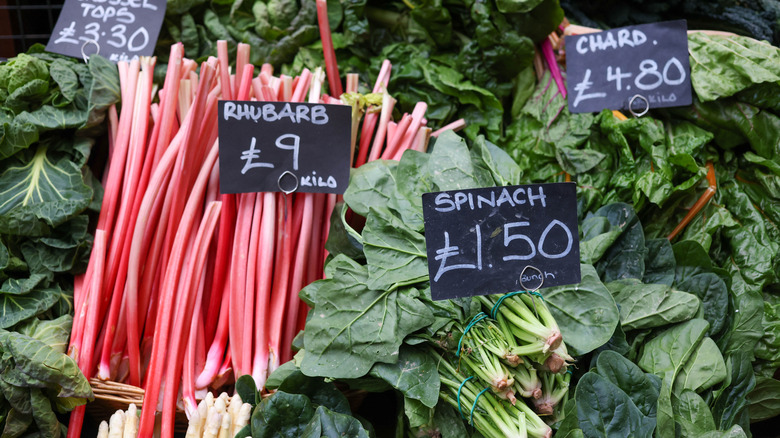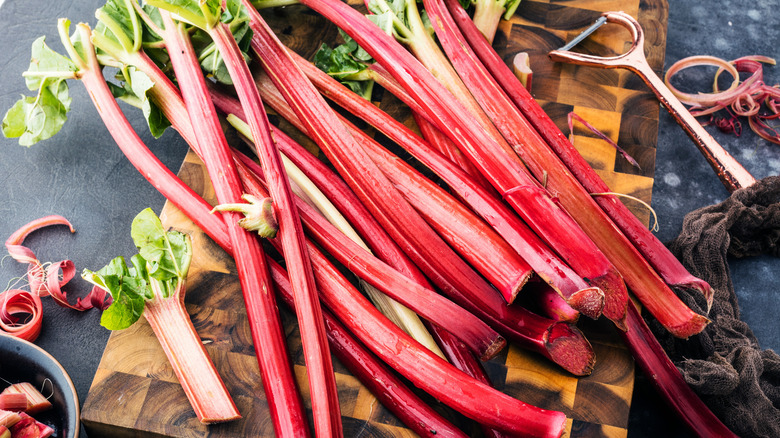Why You Should Use Rhubarb To Clean Burnt Food In Your Pots And Pans
Housewives wield power. This was the case even in the 1940s, an era when great room was available for social and civil improvement, and when great knowledge flowed from these home-rooted women. One such piece of useful information was that rhubarb, the colorful and reasonably priced spring vegetable, can be a multi-functional object in the kitchen. As a plant, rhubarb is known to survive winter and contain edible stalks, like University of Kentucky researchers detailed. With respect to flavor, though, the vegetable is known to be tart. Given its tartness, bakers tend to use rhubarb in conjunction with strawberries (and sometimes sugar) when pies or cakes must be made. Balancing opposing taste ingredients when cooking is believed to amplify the elements of both.
Even so, one of the craftier uses of the rhubarb plant is for cleaning. Rhubarb bits may be applied inside a scuffed pot or pan to smooth the surface area back out, as House Beautiful reported. The home-based publication explained exactly how to use rhubarb for cleaning pots and pans. Specifically, it explained that if someone sliced the vegetable into micro-bits and then boiled the small pieces in a pot for 10 minutes or more, that the rhubarb would evolve into a "glue-like consistency."
Another crafty use of rhubarb
That "glue-like substance" is key when using rhubarb to clean in the kitchen, per House Beautiful. After boiling it, the person should coolly rinse the pot or pan. The person may also remark at how easily the residue was erased. But, that's not the only non-edible usage of rhubarb. Another surprisingly helpful usage is as a pest-killer, according to Molly Maid. Because rhubarb plant leaves host elevated levels of oxalic acid, rhubarb can be considered toxic. But, this toxicity proves useful when trying to DIY rid a space of insects such as caterpillars and slugs.
Per Molly Maid, to "gently" kill some bugs, first boil 4 cups of water and 2 cups of chopped rhubarb. After the solution boils, then let it simmer for a half hour. Then, take the pan off of the burner to give it space and time to cool off. Next, strain the "rhubarb mixture" while also pushing the leaves toward the strainer. Afterward, combine 1 teaspoon of liquid dish soap and 2.5 cold water cups into a spray bottle. Next, combine the rhubarb mixture. Lastly, spray away. Just make sure to avoid dousing little humans and furry friends.

